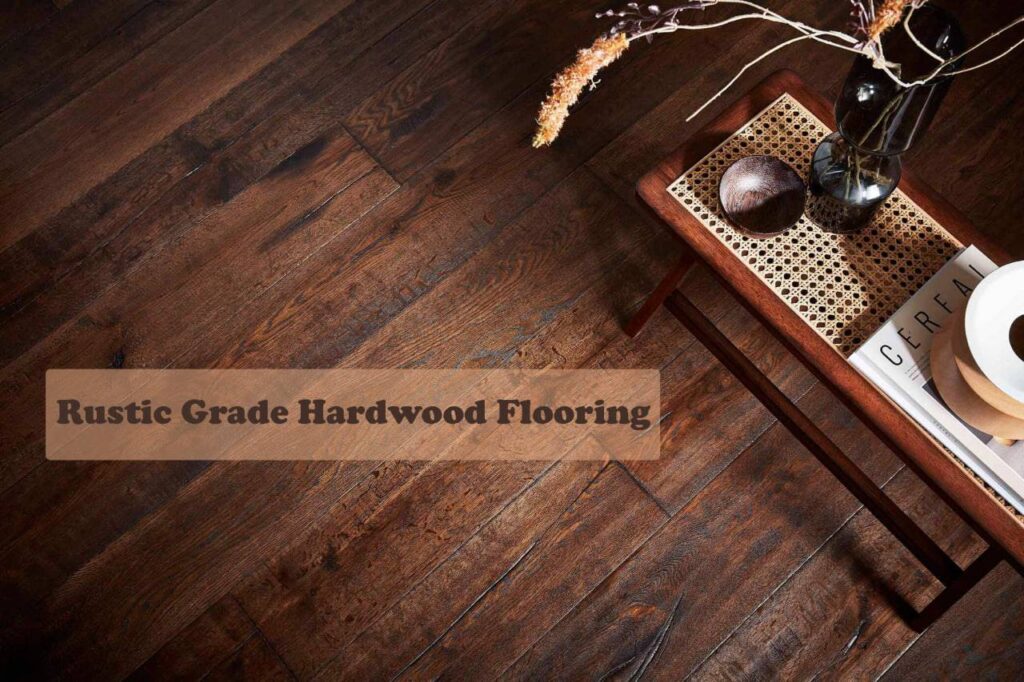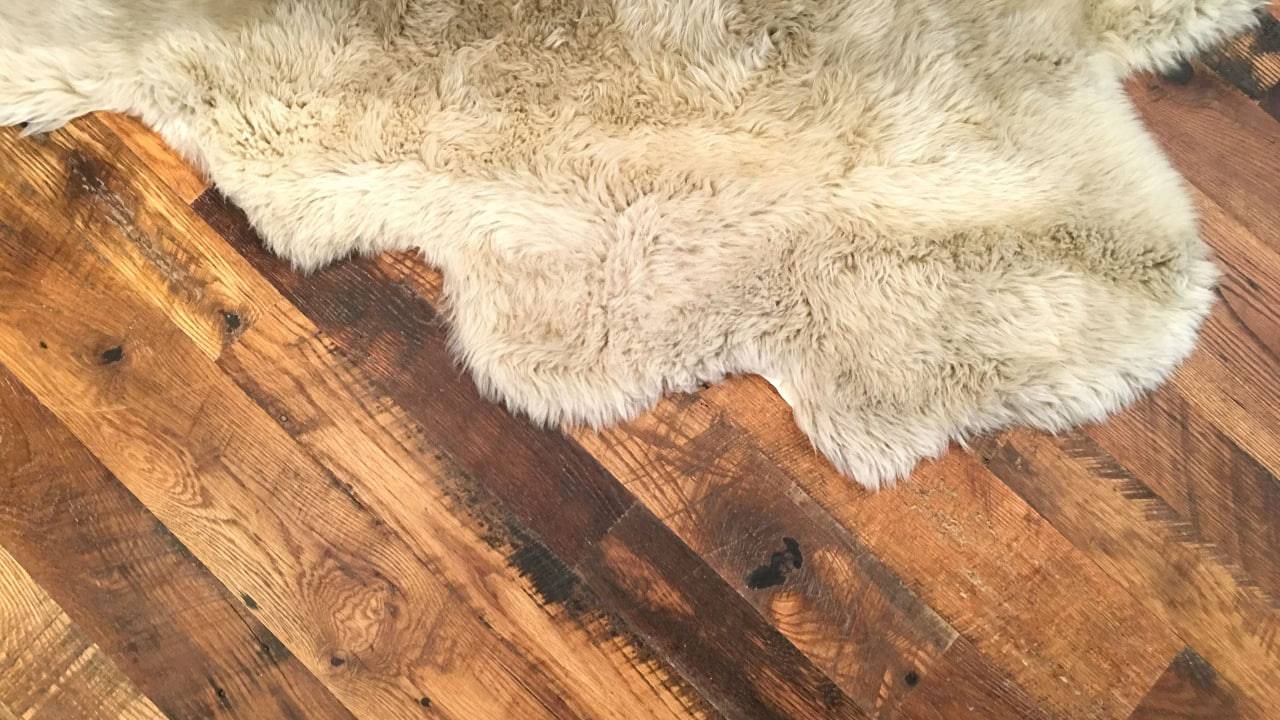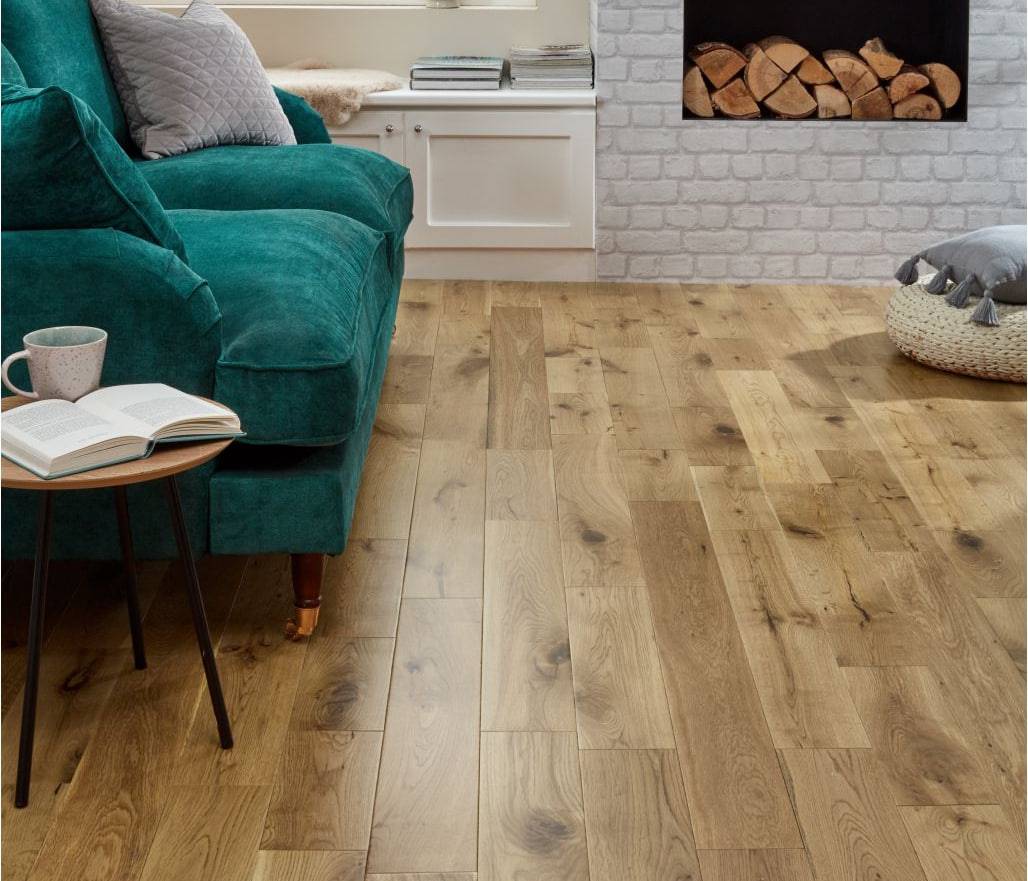Dreaming of a floor that whispers stories of nature’s raw beauty? Rustic grade hardwood might just be your perfect match. Often overlooked, this grade embraces the characterful imperfections of wood, offering a unique blend of affordability, warmth, and undeniable personality. But before you dive headfirst, it’s essential to understand its quirks and charm.
This comprehensive guide is your key to unlocking the secrets of rustic hardwood flooring. We’ll delve into its distinctive features, explore the spectrum of appearances, navigate potential drawbacks, and equip you with tips for choosing the perfect planks for your space. So, whether you’re a seasoned homeowner or a design enthusiast yearning for a touch of rustic elegance, prepare to embark on a journey that will transform your understanding and appreciation of this captivating flooring option.
Are you ready to embrace the beauty of imperfection and add a touch of timeless character to your home? Let’s begin!
What is Rustic Grade Hardwood Flooring?
Forget the generic “rustic” label slapped on seemingly every distressed-looking surface! When it comes to hardwood flooring, rustic grade holds genuine meaning. It’s not just about aesthetics, but a designated category signifying unique characteristics and distinct advantages.
Unlike laminate or vinyl mimicking a rustic wood look, authentic rustic grade hardwood falls under a specific industry standard set by the National Hardwood Lumber Association (NHLA). It’s wood just below the “natural grade,” intended for homes but embracing nature’s imperfections: knots, color variations, and subtle imperfections.
These natural markings might seem like flaws, but for many, they become the true beauty of rustic grade. This wood tells a story, adding warmth and character to any space. So, before you judge it based on its label alone, delve deeper into this unique flooring option. Explore its benefits, potential drawbacks, and how to choose the perfect planks for your vision. Prepare to discover a world of timeless charm and natural aesthetics beyond the surface!
Decoding the Hierarchy: A Look at Hardwood Grades
Hardwood lumber comes in various grades, each catering to specific needs and aesthetic preferences. Here’s a breakdown of some key categories:
The Pinnacle: FAS Grade (Firsts and Seconds)
Imagine flawless, long planks, practically void of imperfections. That’s FAS grade, the premium choice for fine woodworking, crafting exquisite furniture, cabinets, and trim. Think heirloom pieces that showcase the natural beauty of the wood.
Close Cousins: FAS1F (One Face & Selects) and No. 1 Common
For projects demanding consistent color and quality on one visible side, FAS1F (also known as F1F or SAB) delivers. Ideal for doors and cabinet face frames, it offers a good balance of aesthetics and practicality. Meanwhile, No. 1 Common, with at least two-thirds of its surface clear, serves well for various applications where some variation is acceptable.
Embrace the Rustic Charm: No. 2A Common (Rustic Grade)
Now, let’s talk rustic! Sometimes called #2, tavern, or cabin grade, this unique category welcomes knots, color variations, and natural markings. While surface quality may not be as uniform as other grades, it exudes a distinctive charm, offering affordability and timeless character. Expect shorter random lengths and about half the surface free of imperfections.
Finding the Perfect Match: Where Rustic Hardwood Thrives
While rustic hardwood boasts undeniable charm, its unique character dictates where it truly shines. Let’s explore ideal placements to maximize its beauty and benefits:
Embrace the Rugged Life:
Rustic hardwood thrives in workshops, outbuildings, and home gyms. Its inherent resilience makes it a natural fit for these high-wear spaces. Knots and imperfections stand up to heavy use, making it a practical choice for those seeking a flooring that can handle anything life throws its way.
Muddy Marvel:
Mudrooms rejoice! The textured surface of rustic hardwood is fantastic at camouflaging dirt and moisture. Say goodbye to visible tracked-in messes; instead, enjoy a floor that readily copes with the mess of everyday life.
Cabins and Beyond:
The “cabin grade” moniker hints at its natural synergy with rustic settings. Cabins, lodges, and other nature-inspired spaces embrace the warmth and authenticity rustic hardwood exudes. Let the flooring complement the surrounding elements, creating a cohesive and inviting atmosphere.
Beyond Barefoot Zones:
It’s true that the presence of knots and potential unevenness make walking barefoot on rustic hardwood less than ideal. However, area rugs or strategic footwear can easily solve this. Consider these solutions in spaces like playrooms, basements, or entryways where barefoot comfort might be desired.
Sizing Up Rustic Charm: Understanding Rustic Hardwood Dimensions
Rustic grade hardwood offers undeniable character, but its dimensions come with unique quirks to consider. Let’s delve into what to expect in terms of width, length, and bundled offerings:
Width:
- Familiar dimensions: You’ll find widths commonly seen in natural grade flooring, like 3/4-inch by 2 1/2-inch.
- Wider options: Explore wider selections like 3 1/4-inch, 4-inch, and 4 1/4-inch for a bolder rustic statement.
- Plank widths and cupping: Be aware that cupping, a slight warping, tends to be more noticeable in wider planks due to imperfections.
Length:
- Embrace the unexpected: Rustic grade rarely boasts uniform, long lengths. Expect variations even within the same brand.
- Nested bundles: These bundles cleverly combine short and long boards, appearing like long planks upon first glance.
- Length range: Short boards can start at 10 inches, while longer ones reach up to 6 feet.
- Balanced bundles: Ensure an even mix of lengths within the bundle to avoid an overwhelmed-by-short-boards installation.
Embracing the Imperfect Beauty: Unveiling the World of Rustic Hardwood Flooring
So, is rustic hardwood flooring right for you? It all depends on your vision and priorities.
If you crave flawless uniformity and pristine surfaces, other grades might be a better fit. But if you seek character, warmth, and affordability, rustic hardwood unveils a unique world of possibilities. Embrace its natural imperfections as storytelling elements, adding timeless charm to your space. Remember, its practicality shines in durable settings like workshops and mudrooms, while strategic use of rugs can enhance comfort in other areas.
Ultimately, choosing rustic hardwood is a conscious decision. By understanding its strengths, limitations, and diverse dimensions, you can unlock its full potential and create a space that speaks your unique style. So, embrace the beauty of imperfection, explore the possibilities, and let rustic hardwood weave its magic into your home.
Rustic Hardwood Flooring FAQs:
Is rustic hardwood flooring really less expensive than other grades?
Yes, generally rustic hardwood is more affordable than higher grades like Select or FAS. However, the price can vary depending on wood species, width, and specific retailer.
Will the knots and imperfections look good in my home?
This depends on your personal style! Rustic imperfections add character and warmth, perfect for a natural or vintage aesthetic. If you prefer a sleek, uniform look, rustic might not be ideal.
Can I install rustic hardwood myself?
While possible, professional installation is recommended due to potential variations in board lengths and potential need for sorting. They can ensure a smooth, even finish.
Does rustic hardwood scratch easily?
No more so than other hardwoods. However, the knots and imperfections might make scratches less noticeable. Regular maintenance like cleaning and occasional refinishing is still important.
Is rustic hardwood good for high-traffic areas?
It depends on the specific space. While durable, the textured surface and potential unevenness might not be ideal for frequent barefoot traffic. Consider area rugs or strategic footwear in these areas.
Can I sand out the knots and imperfections?
Technically yes, but this would significantly alter the rustic character and might leave uneven surfaces. Embrace the natural markings as part of the unique charm.
What color options are available for rustic hardwood?
Most rustic hardwood comes in natural wood tones, showcasing the variations in the wood itself. Stained options might be available depending on the retailer and species.
Where can I find more information and see examples of rustic hardwood flooring?
Many flooring retailers and lumberyards showcase rustic hardwood options. Online resources and design blogs can also provide inspiration and specific product information.
Should I purchase extra flooring when using rustic grade?
Yes, it’s recommended to buy 20-30% more due to potential sorting needs and shorter, unusable board sections.
Can I use radiant heat with rustic hardwood flooring?
Consult a flooring professional and the specific product information. Some rustic hardwood options might not be compatible with radiant heat systems.




